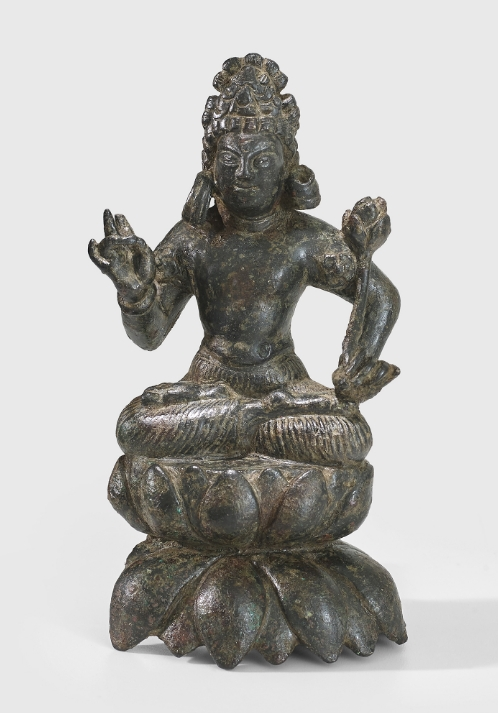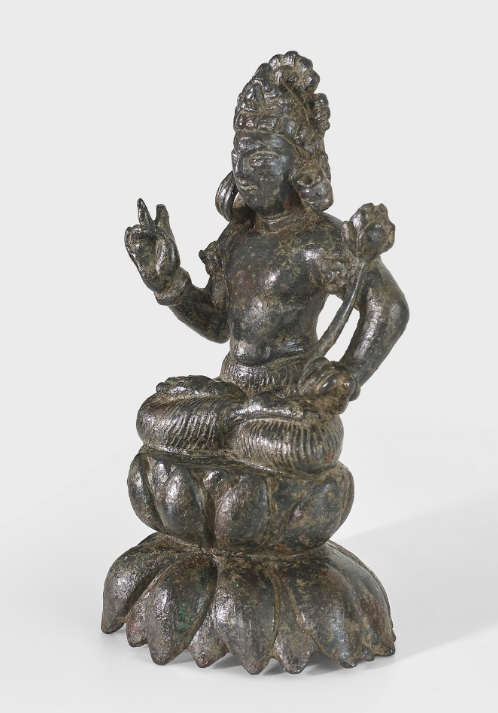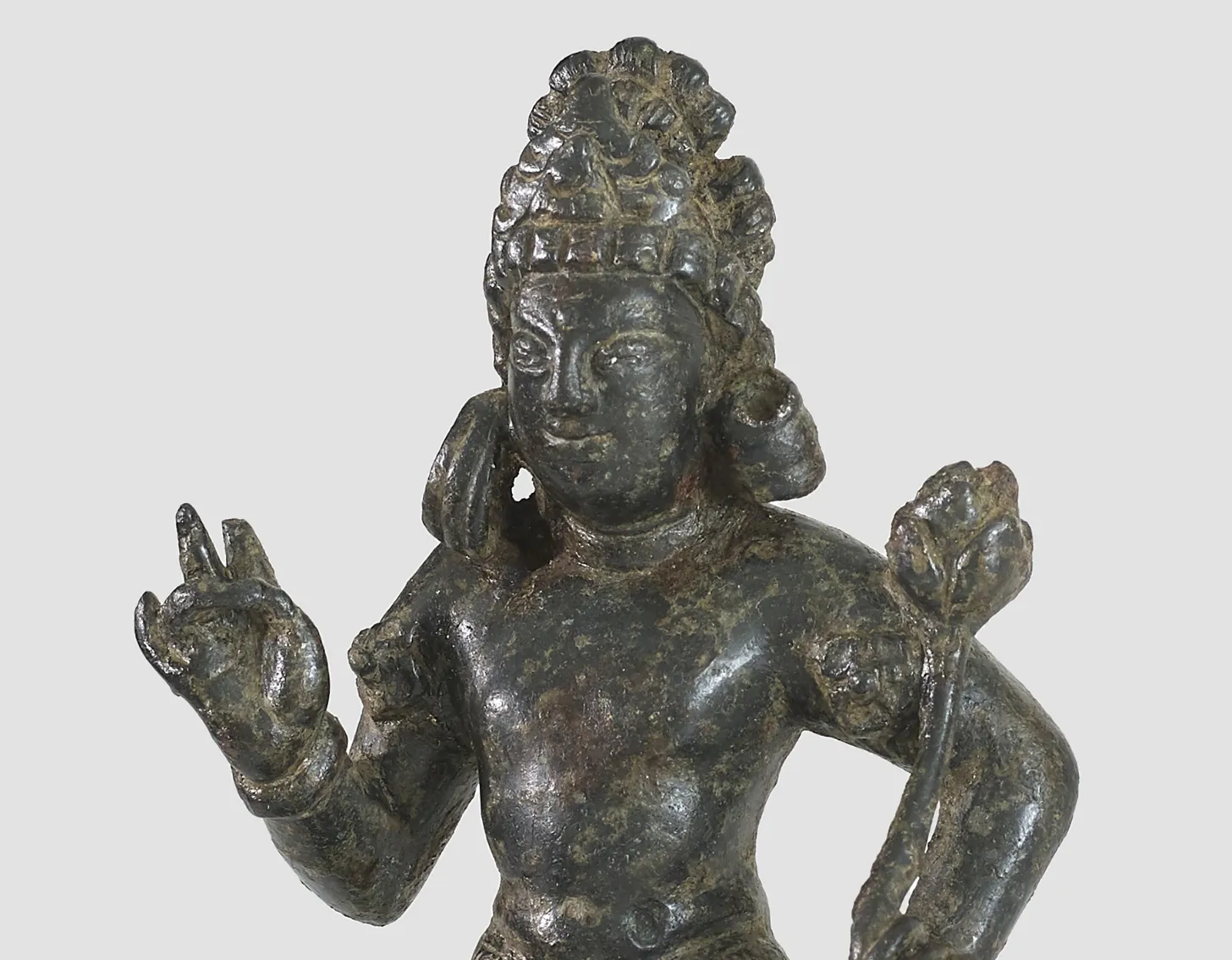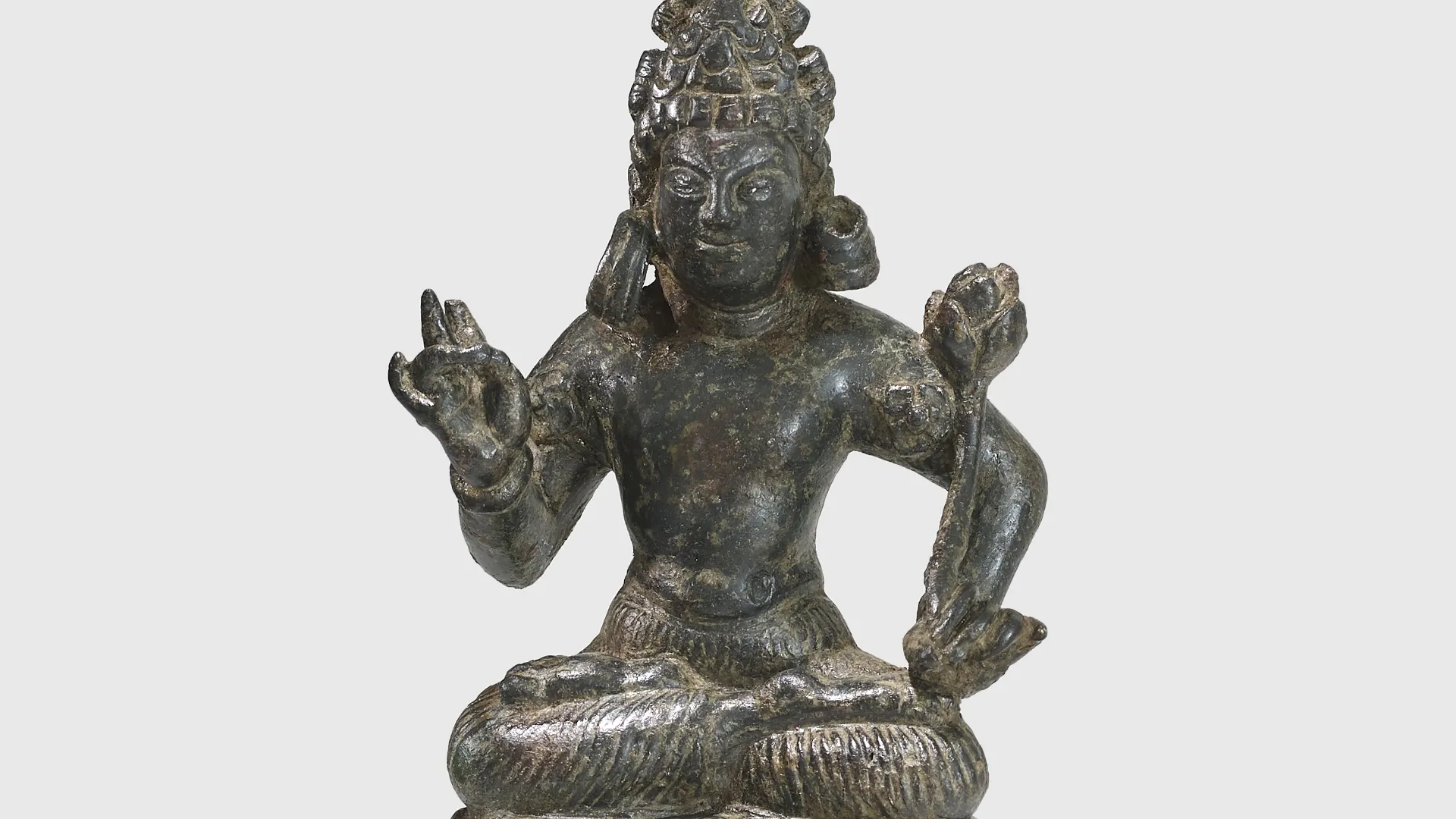The verdant valley of Swat fell within the cultural boundaries of Gandhara and its Indo-Greek Buddhist culture. Hundreds of monastic sites were established in Swat before the second century CE. A distinctive style or school of sculpture associated with Swat Valley and its surrounding hills flourished from about the sixth to the end of the tenth centuries CE. Since the early 1960s, Swat Valley artefacts have emerged, enabling scholars to refine our understanding of the distinctive characteristics of this style.


Among the features most often associated with Swat Valley sculpture is a narrow-waisted lotus base with wide, rounded, unembellished lotus petals. Facial features are similar but less exaggerated than those in the adjacent Kashmiri region. Swat Valley hair styles are sometimes unique, with the hair gathered into a fan shape at the top of the head (cat. no. 5). It has also been observed that there is a preference for certain mudras, or symbolic gestures, in Swat Valley images.

